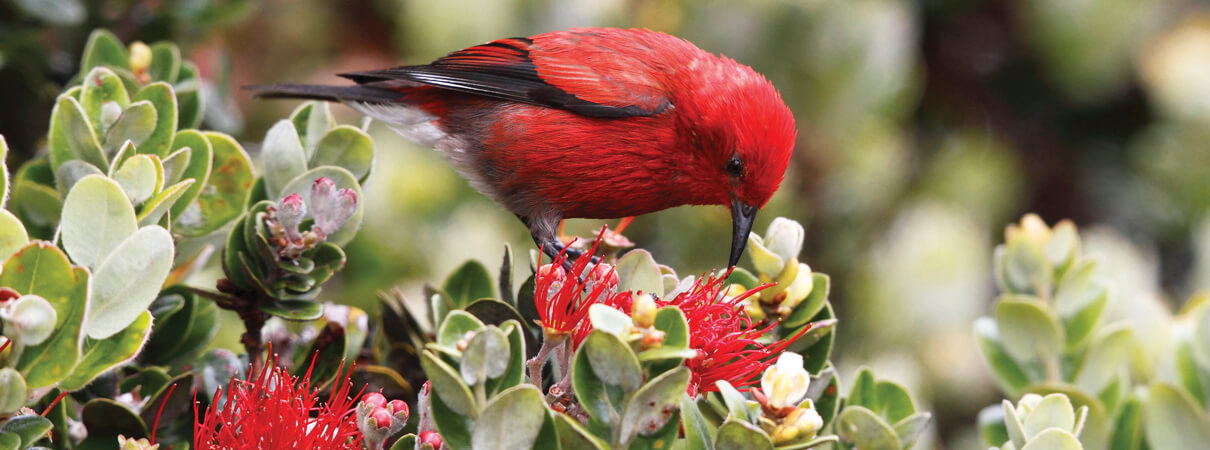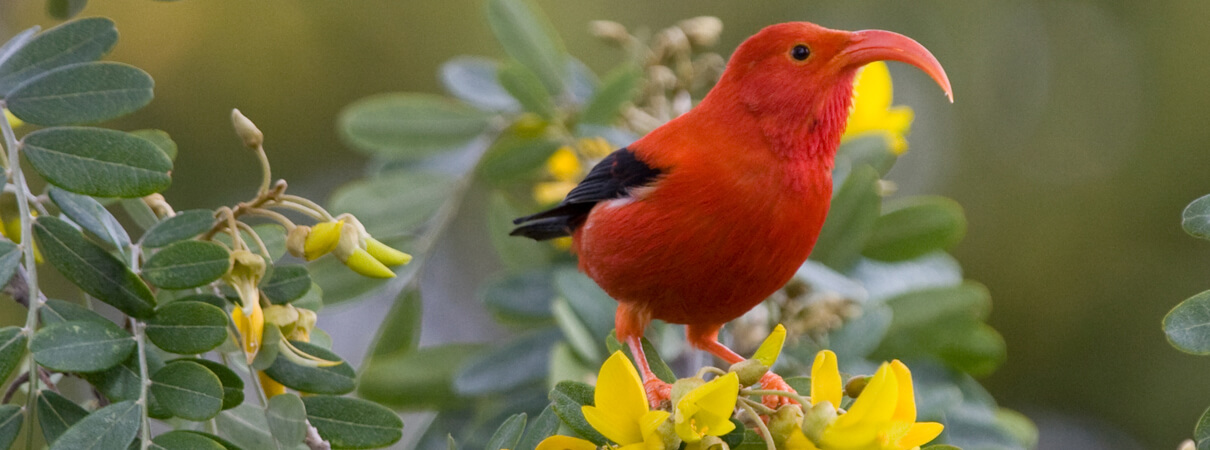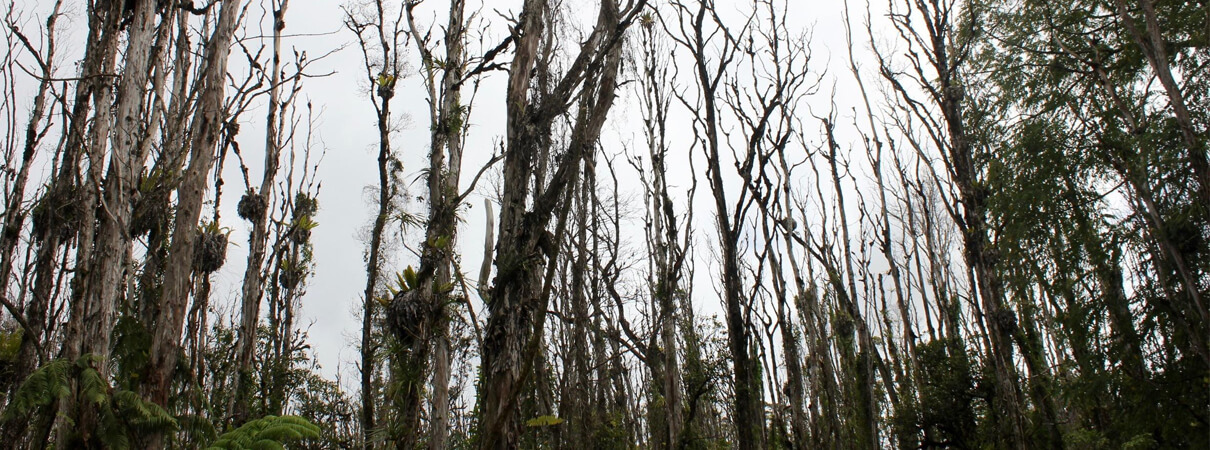Hawai'i's Legendary 'Ohi'a Tree Is Important for Birds and People
Native Hawaiian mythology tells the tale of two young lovers named 'Ohi'a and Lehua. Pele, the goddess of volcanoes, was also in love with the handsome 'Ohi'a. She approached him, but he refused her. In a jealous rage, Pele turned 'Ohi'a into a tree. Lehua was devastated. The other gods, pitying Lehua for her loss, turned her into a flower of the 'Ohi'a tree.
This is the story of Metrosideros polymorpha, also known as 'ihi'a lehua, 'ohi'a, or just lehua. The story is apt: The tree, with its iron-hard wood, is almost impossible to imagine without its signature spray of vibrant orange-red or yellow flowers with long, slender stamens.

'Apapane on 'ohi'a tree, Jack Jeffrey
A Lifeline for Native Birds
'Ohi'a is a prolific tree that grows in an amazing variety of forms. Whether a twisted shrub or a tall, straight tree, it occurs in every soil type. It is also one the first plants to colonize new lava flows. Unlike many other Hawaiian plants, it can live in close proximity to toxic volcanic gases by closing the pores of its leaves.
In Hawai'i, 'ohi'a is the most common native tree species in the main islands. It is also one of the most important trees for native Hawaiian birds such as 'Apapane and 'Akohekohe, which get their food from nectar-producing flowers. Dozens of extinct species would have fed frequently on 'ohi'a, too.

I'iwi, Robby Kohley
In recent decades, other birds have also come to rely on 'ohi'a. The 'I'iwi, with its sickle-shaped bill, is better adapted to lobelias and mints, but as these plants have become rare, 'I'iwi have turned more to 'ohi'a. 'Apapane and 'I'iwi move up and down in elevation to take advantage of 'ohi'a blooming at different times in different areas. Unfortunately, seeking out nectar sources at low elevations where malaria is prevalent can be risky—especially for birds like the 'I'iwi that are nomadic and highly vulnerable to avian malaria.
Threats to the 'Ohi'a Tree
'Ohi'a is so critical to the survival of Hawai'i's native birds that it is hard to imagine a vibrant avifauna without it. But the tree is increasingly threatened by plant diseases. 'Ohi'a rust, imported to Hawai'i in decorative flower and foliage shipments from California, is established in Hawai'i and has the potential to devastate the state's one million acres of 'ohi'a. Meanwhile, an aggressive fungus, Ceratocystis fimbriata, also known as rapid 'ohi'a death, has been identified as the cause of death of hundreds of thousands of 'ohi'a trees on over 34,000 acres on Hawai‘i Island.

Rapid ohia death, Hawaii Public Radio/Molly Solomon
Hawai'i's native birds face an uncertain future if disease overcomes the legendary 'ohi'a. So, it is essential that state and federal agencies increase the resources available to understand and deal with these disease threats, while at the same time ramping up currently inadequate biosecurity measures to prevent new diseases from getting to Hawai'i in the first place.
We can do nothing less. The birds of Hawai'i require it.
Editor's note: A version of this article first appeared in the spring 2015 edition of Bird Conservation magazine.
 George Wallace is ABC's Vice President of Oceans and Islands. George has been active in bird research and conservation for over 30 years. Prior to joining ABC, he worked for Rocky Mountain Bird Observatory, Florida Fish and Wildlife Conservation Commission, Bird Studies Canada, The Nature Conservancy, Point Reyes Bird Observatory, and the U.S. Fish and Wildlife Service. He received an MS in Zoology from the University of Guelph and a PhD in Biology at the University of Missouri.
George Wallace is ABC's Vice President of Oceans and Islands. George has been active in bird research and conservation for over 30 years. Prior to joining ABC, he worked for Rocky Mountain Bird Observatory, Florida Fish and Wildlife Conservation Commission, Bird Studies Canada, The Nature Conservancy, Point Reyes Bird Observatory, and the U.S. Fish and Wildlife Service. He received an MS in Zoology from the University of Guelph and a PhD in Biology at the University of Missouri.


















































